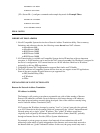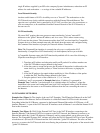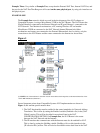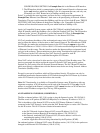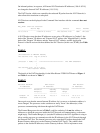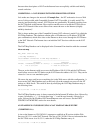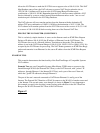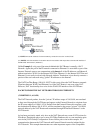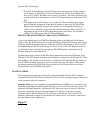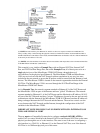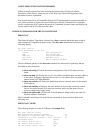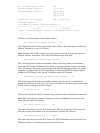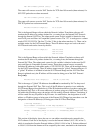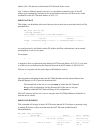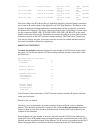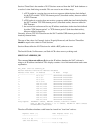
Systems NAT functionality:
The NAT External Range in the NAT Router does not have to be directly related to
the IP address of the External NAT Port. However, the NAT External Range does
have to be a "global" IP address and it must be "routable." The network must be able
to deliver IP packets with addresses in the NAT External Range to the External NAT
Port.
1.
The designation of an IP address as part of the NAT External Range has a higher
priority than the designation of that same IP address as part of the NAT PassThru
Range in the Compatible Systems sub−interface. Even though the IP address of
198.41.9.214 is included as part of the NAT PassThru Range (198.41.9.195/27), its
designation as part of the NAT External Range takes precedence. The IP address
198.41.9.214 will be part of the NAT External Range.
2.
PINGING THE MACINTOSH AT 198.41.9.210 (CONDITION 3)
A site on the Internet sends an ICMP Echo Request packet to the Macintosh at IP address
198.41.9.210. The ICMP packet arrives at the NAT Router WAN 0 IP Interface, the External
NAT Port. The IP destination address is within the NAT PassThru Range of 198.41.9.195/27,
and is not within the NAT External Range of 198.41.9.214, so the NAT Router does not do
any Network Address Translation to the packet. The ICMP packet is transmitted out IP
Interface Ethernet 0 to the Macintosh.
The Macintosh replies with an ICMP Echo Reply packet that enters the NAT Router from
Ethernet 0. The NAT Router determines that the packet is destined for the External NAT Port
with NatMap = On, but the source IP address is within the NAT PassThru Range, and not in
the NAT External Range. The router does not translate the source IP address of the packet
and simply transmits this ICMP Echo Reply packet out WAN 0 and to the source on the
Internet which sent the ICMP Echo Request.
EXAMPLE THREE
This example demonstrates the functionality of the Compatible Systems NAT software to
configure the External NAT Port and Internal NAT Port on the same physical port (Ethernet 0
in this example) using sub−interfaces.
Example Three uses one Compatible Systems MicroRouter 2220R Router to connect to the
Internet through Ethernet 0 (the External NAT Port), to the NAT Network (with "private" IP
addresses) through Ethernet 0.1 (the Internal NAT Port), and to part of the user's Network,
which has "global" IP addresses, through Ethernet 0.2. The part of the user's network
connected to NAT Router Ethernet 0.2 is really part of the Internet. The External NAT
Interface of Ethernet 0 connects to the Internet via another device (not shown) connected to
the same Ethernet hub as Ethernet 0.
Figure 3



